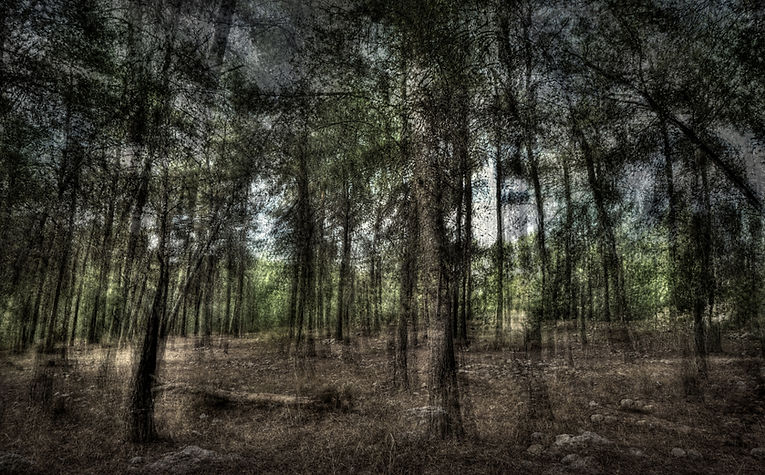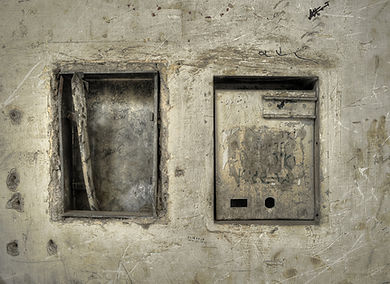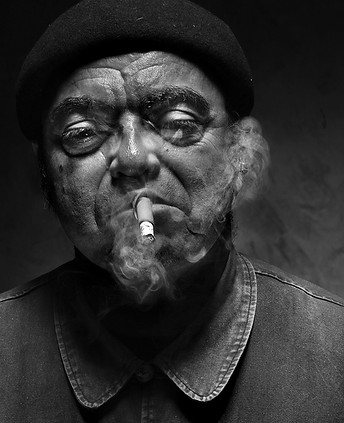
PROJECTS
The series “Black Panthers” and “Transparent” are dedicated in honor of the photographer, curator, and artist The late Yehudit Matzkel , who, with great wisdom, knew how to focus the spotlight on places of darkness and obscurity.
Sadly, she did not live to witness the exhibition she had begun to curate.
Special thanks to Adi Brande, who carried forward her vision.
BLACK PANTHERS IN ISRAEL
The Black Panthers were an Israeli protest movement of second-generation Jewish immigrants from Middle Eastern countries. They were one of the first organizations in Israel with the mission of working for social justice for the Mizrahi Jews. Saadia Marciano, one of the movement's founders, chose the name "Black Panthers" in 1971 when Angela Davis, one of the African American Black Panthers, came to visit Israel where she met with Marciano, who then adopted the name. They are also sometimes referred to as the Israeli Black Panthers to distinguish them from the African American group
TRANSPARENTS
The 'Door of Hope'
Founed by Dave Fiquette . An American Christian, who set up a sanctuary in the old central station for prostitutes drug eddicts and homeless women.
A shelter where they can rest, find a meal, clothing, and most importantly, a respite from the grimy streets of South Tel Aviv.
This seri was made at 2008. And prolonged for the period of six months .It was shot in black & white and hand tinted in color.
The seri is Dedicated to a beautyfull girl that is no longer with us.
SURVIVORS
a series of portraits of Holocaust survivors, whose very presence marks them as among the last living witnesses to the atrocities that took place in Europe. The portraits are printed in black and white, as though they already belong to a forgotten archive. Alongside these portraits appear several color photographs of empty living rooms—spaces once inhabited by some of the sitters. These rooms, stripped of their presence, echo both memory and absence at once.The series offers a layered gaze into the fragile tension between remembrance and forgetting: the portrait bears the testimony of life, while the colorful, vacant interiors mark the passing of time and the inevitability of absence.
MY ADD/ADHD ?
How does Attention Deficit Disorder appear to the eye of the beholder? Can it be captured in a single visual image – a photograph that conveys scattered thoughts, an overflow of details bursting from every direction, a constant motion and inner restlessness?
Can the lens reveal the many birds fluttering at once inside the mind, the crossing noises, the endless leap between shifting focal points?
Such a photograph would not necessarily present one clear figure, but rather a layering of fragments, blurs, splinters of light seeping through cracks – an attempt to render the invisible tangible.
In this series, I tried to translate and embody my own emotions and sensations through photography, giving shape to what so often remains hidden within.
BACKYARD
is a visual journey into the intimate spaces surrounding the artist, revealing the ways in which Israeli society engages—or fails to engage—with its immediate environment. The series contrasts the external courtyards and peripheral spaces with the interiors of homes, emphasizing the neglect of the proximate perimeter. Within this neglect emerges a unique and complex aesthetic, where abandonment and everyday materiality converge.The work resonates with the Japanese concept of Wabi-Sabi, which finds beauty in the transient, the imperfect, and the impermanent—qualities discovered even within the overlooked and neglected spaces of daily life. These photographs invite viewers into a deep contemplation of the relationship between people and place, between society and its surroundings, and reveal how beauty can emerge precisely in the most neglected corners.
"SEARCHING FOR M"
“Searching for M” unfolds as a visual inquiry into the realm of the spectral, the repressed, and the unspoken. The series stages a dialogue with absence and presence, where blurred figures wander through abandoned industrial spaces—apparitions that echo Derrida’s notion of the hauntological, suspended between memory and erasure.These sites of neglect are not merely architectural remains; they become psychic landscapes, metaphors for fractured subjectivities and for the unresolved tensions haunting the social periphery. Rendered in unsettling, almost “unnatural” colors, the images dismantle the boundary between documentation and imagination, between the real and the phantasmatic.At the center of this spectral narrative stands the recurring figure of the “young girl,” a ghostly presence that conjures Freud’s idea of the return of the repressed. She embodies both desire and dread, innocence and threat, opening a fissure through which what has been silenced or denied insists on visibility.Through this interplay of ruin, spectrality, and memory, Searching for M constructs a haunted cartography of Israeli society—where unhealed wounds, social margins, and suppressed histories reappear as shadows that refuse to vanish. The photographs do not simply document a place; they stage a psychic and cultural drama in which the invisible becomes tangible, and the ghosts of the past continue to inhabit the present.
M was and is my late sister.
COFFEE CIRCLES
The series presents 13 conceptual portraits of individuals engaging in the ritual of coffee drinking, where the everyday act transforms into a ceremonial practice reminiscent of tasseography—the reading of coffee grounds.The series explores the delicate intersection of social ritual, belief, folklore, and superstition, demonstrating how seemingly simple daily gestures can become vessels of meaning and shared cultural memory. Within these small ceremonies, sometimes guided by superstitions or hidden signs, questions of fate, luck, and the spiritual rhythms of daily life emerge.Through measured gazes and intimate gestures, the work invites viewers to reflect on how simple human actions transform into symbols, and how community, belief, superstition, and narrative intertwine even in the smallest moments of everyday life—revealing the depth and richness embedded in the mundane.
SELF PORTRAIT
This series of portraits is characterized by the presence of the artist within each image, functioning as a medium for a multifaceted self-portrait. Each photograph transcends mere external representation, becoming a mirror of identity, emotional states, and shifting psychological conditions. In this way, a visual language emerges in which the boundary between subject and sitter is blurred, transforming the portrait into a space of intimate exploration and self-reflection.The series examines the interplay of reflection and identity, the duality between outward appearance and inner worlds, and the potential of the portrait as a tool for cultural, psychological, and aesthetic inquiry alike.
DRAWINGS
In recent years, every project I create is accompanied by a series of charcoal drawings, traced directly by the movement of my fingers across the paper. They are not marginal notes to the photographs, nor technical supplements, but a parallel act—another breath of the work itself.Where the camera captures the surface with cold precision, the charcoal reveals the raw touch: the smudge of a fingertip, the erasure, the residue that resists control. Each drawing carries within it the effort, the passing of time, the materiality of presence—an imprint that feels alive.Photography and drawing exist side by side: the photograph gazes outward, while the drawing turns inward. Together they open a space of dialogue between the fleeting and the eternal, between body and spirit, between immediacy and lingering reflection.








